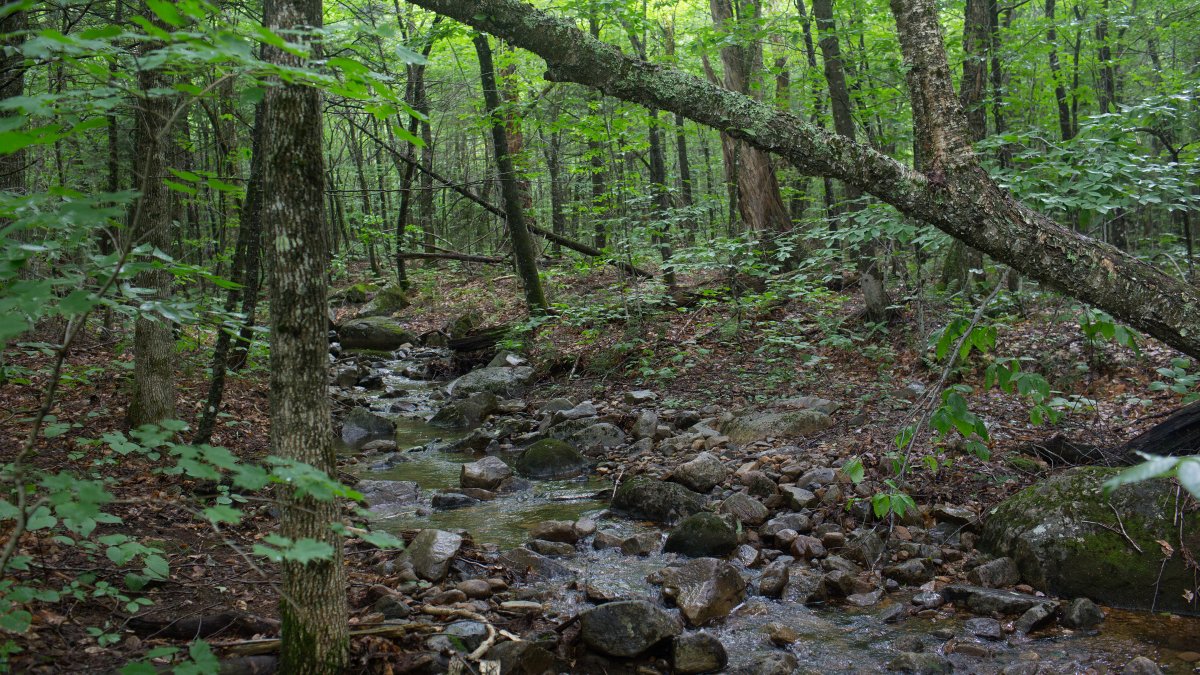Project conserves 3,700 acres of forest in northern New Hampshire
Project conserves 3,700 acres of forest in northern New Hampshire NECN


Society for the Protection of New Hampshire Forests Completes Conservation Projects

The Society for the Protection of New Hampshire Forests has successfully concluded a long-term effort to protect two adjacent forests in the northern part of the state, covering a total area of 3,700 acres (1,497 hectares).
Objectives and Management
The conservation projects aim to achieve multiple objectives, including:
- Habitat protection
- Scenic value preservation
- Public recreation and education
The forests will remain open to activities such as hiking, hunting, fishing, and forest management.
Shelburne Valley Forest
The Shelburne Valley Forest spans across 2,670 acres (1,081 hectares) and stretches from the Androscoggin River to the ridgeline of the Mahoosuc Range. This range is an extension of the White Mountains and straddles the border between New Hampshire and Maine. The land features an 84-mile (135-kilometer) trail, opportunities for river fishing and boating, and diverse habitats such as cranberry bogs and red spruce swamps.
Bald Cap Peak Forest
The Bald Cap Peak Forest covers an area of 1,030 acres (417 hectares) and is known for its hiking trails. Prominent features of this forest include the rocky pine ledges of Bald Cap Peak and Middle Mountain, as well as the 300-foot (91-meter) cascades of Giant Falls. Additionally, it shares 2.6 miles (4 kilometers) of boundary with the Appalachian Trail, facilitating the connection between the Mahoosucs and the White Mountain National Forest.
The completion of these conservation projects was announced on Monday.
Sustainable Development Goals (SDGs)
The Society for the Protection of New Hampshire Forests’ conservation efforts align with several Sustainable Development Goals (SDGs), including:
- Goal 15: Life on Land – By protecting and managing these forests, the society contributes to the preservation of terrestrial ecosystems and biodiversity.
- Goal 11: Sustainable Cities and Communities – The open access to these forests promotes outdoor recreation and education for the public.
- Goal 6: Clean Water and Sanitation – The conservation projects help protect water quality by preserving the forests’ natural hydrological functions.
- Goal 13: Climate Action – The diverse ecosystems within the forests play a role in combatting climate change.
Jack Savage, President of the Society for the Protection of New Hampshire Forests, stated that these projects are crucial for “conserving working forest that provides sustainable forest products, enhances outdoor recreation, protects water quality, and links diverse ecosystems that combat climate change.” The successful realization of these projects was made possible through a multi-decade partnership involving local, state, and national organizations such as The Conservation Fund and the town of Shelburne.
SDGs, Targets, and Indicators
1. Which SDGs are addressed or connected to the issues highlighted in the article?
- SDG 15: Life on Land – Protect, restore, and promote sustainable use of terrestrial ecosystems, sustainably manage forests, combat desertification, and halt and reverse land degradation and halt biodiversity loss.
- SDG 11: Sustainable Cities and Communities – Make cities and human settlements inclusive, safe, resilient, and sustainable.
- SDG 13: Climate Action – Take urgent action to combat climate change and its impacts.
2. What specific targets under those SDGs can be identified based on the article’s content?
- SDG 15.1: By 2020, ensure the conservation, restoration, and sustainable use of terrestrial and inland freshwater ecosystems and their services.
- SDG 11.4: Strengthen efforts to protect and safeguard the world’s cultural and natural heritage.
- SDG 13.3: Improve education, awareness-raising, and human and institutional capacity on climate change mitigation, adaptation, impact reduction, and early warning.
3. Are there any indicators mentioned or implied in the article that can be used to measure progress towards the identified targets?
- Indicator for SDG 15.1: Proportion of important sites for terrestrial and freshwater biodiversity that are covered by protected areas, by ecosystem type.
- Indicator for SDG 11.4: Number of parties to international multilateral agreements on cultural and natural heritage.
- Indicator for SDG 13.3: Number of countries that have communicated the strengthening of institutional, systemic, and individual capacity-building to implement adaptation, mitigation, and technology transfer.
SDGs, Targets, and Indicators
| SDGs | Targets | Indicators |
|---|---|---|
| SDG 15: Life on Land | Target 15.1: By 2020, ensure the conservation, restoration, and sustainable use of terrestrial and inland freshwater ecosystems and their services. | Indicator: Proportion of important sites for terrestrial and freshwater biodiversity that are covered by protected areas, by ecosystem type. |
| SDG 11: Sustainable Cities and Communities | Target 11.4: Strengthen efforts to protect and safeguard the world’s cultural and natural heritage. | Indicator: Number of parties to international multilateral agreements on cultural and natural heritage. |
| SDG 13: Climate Action | Target 13.3: Improve education, awareness-raising, and human and institutional capacity on climate change mitigation, adaptation, impact reduction, and early warning. | Indicator: Number of countries that have communicated the strengthening of institutional, systemic, and individual capacity-building to implement adaptation, mitigation, and technology transfer. |
Behold! This splendid article springs forth from the wellspring of knowledge, shaped by a wondrous proprietary AI technology that delved into a vast ocean of data, illuminating the path towards the Sustainable Development Goals. Remember that all rights are reserved by SDG Investors LLC, empowering us to champion progress together.
Source: necn.com

Join us, as fellow seekers of change, on a transformative journey at https://sdgtalks.ai/welcome, where you can become a member and actively contribute to shaping a brighter future.







